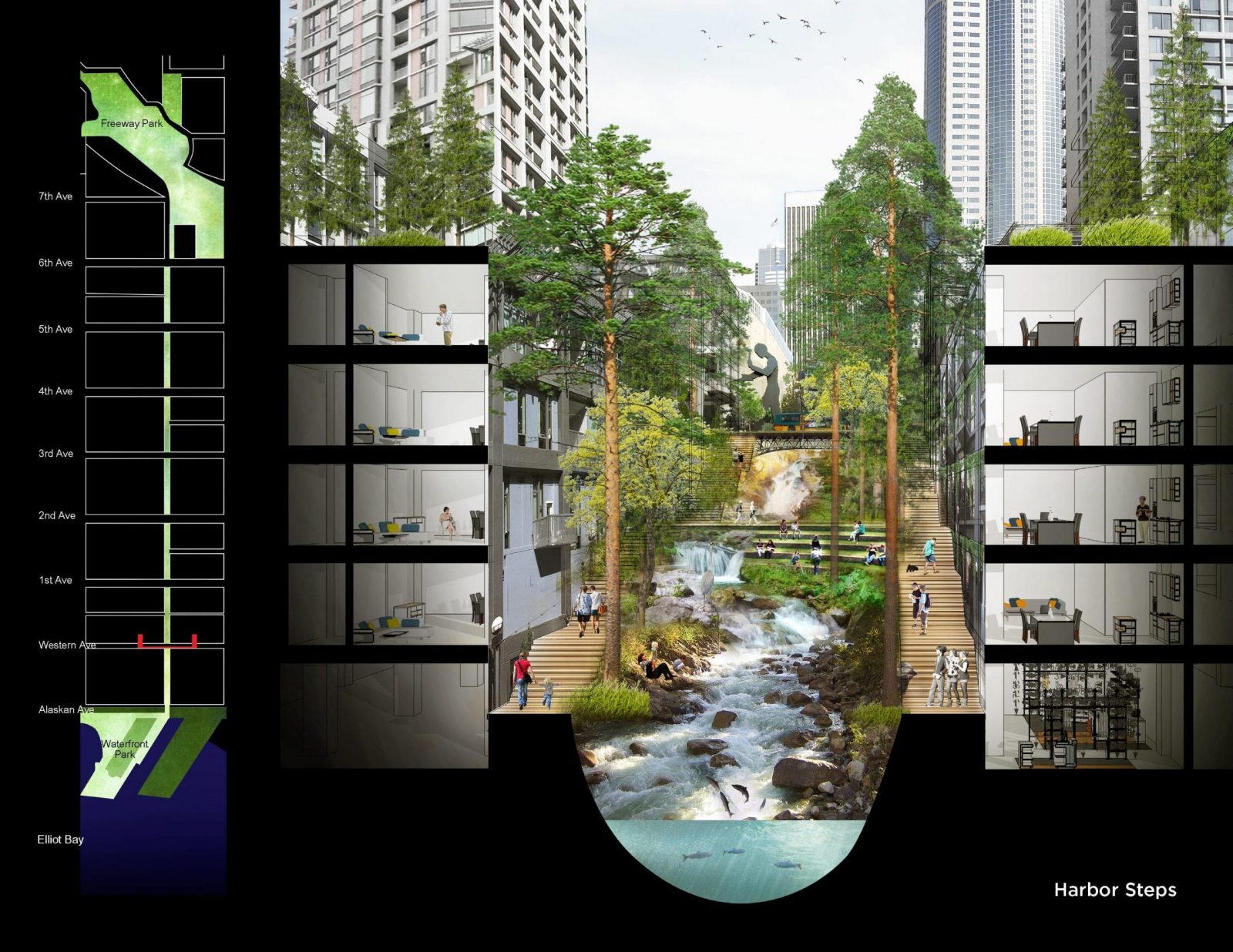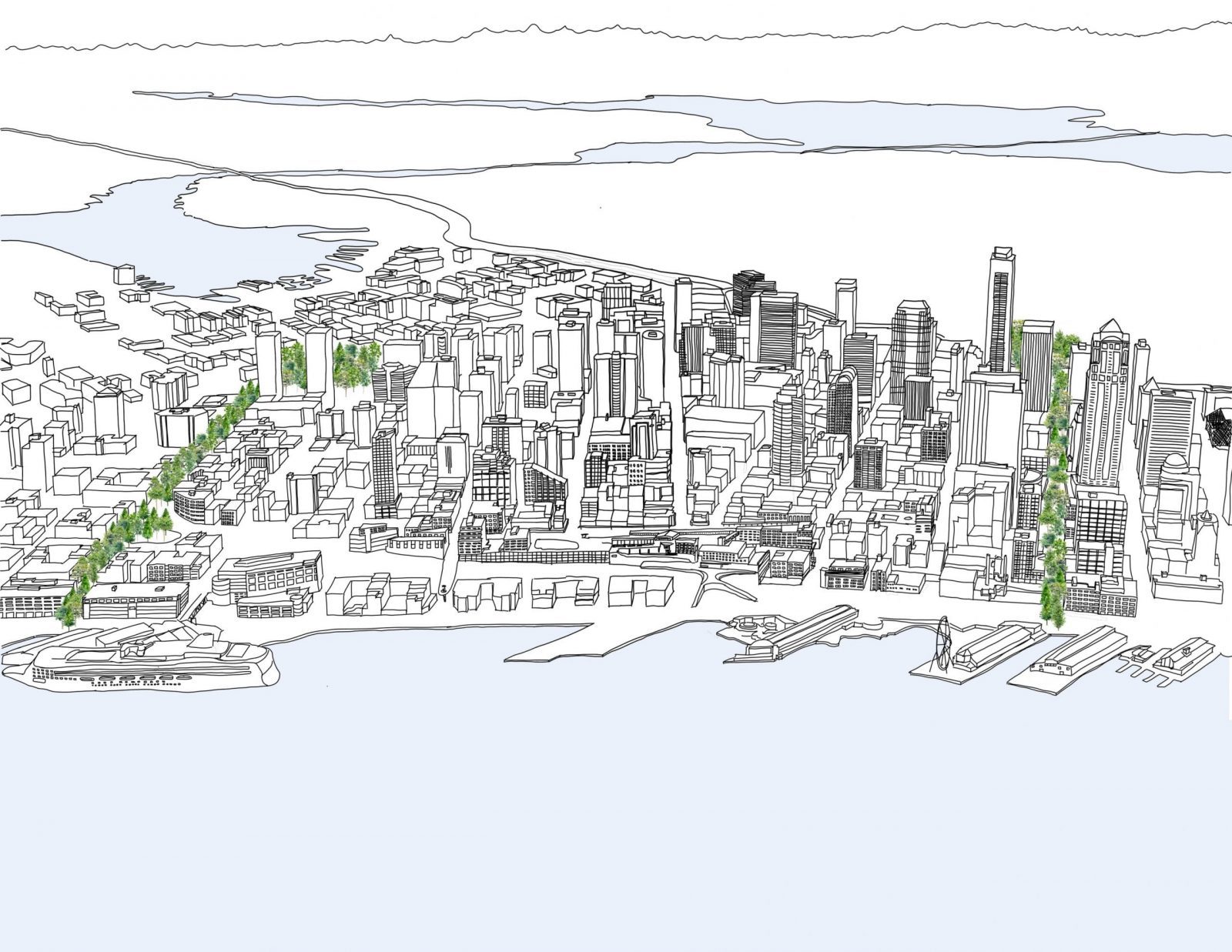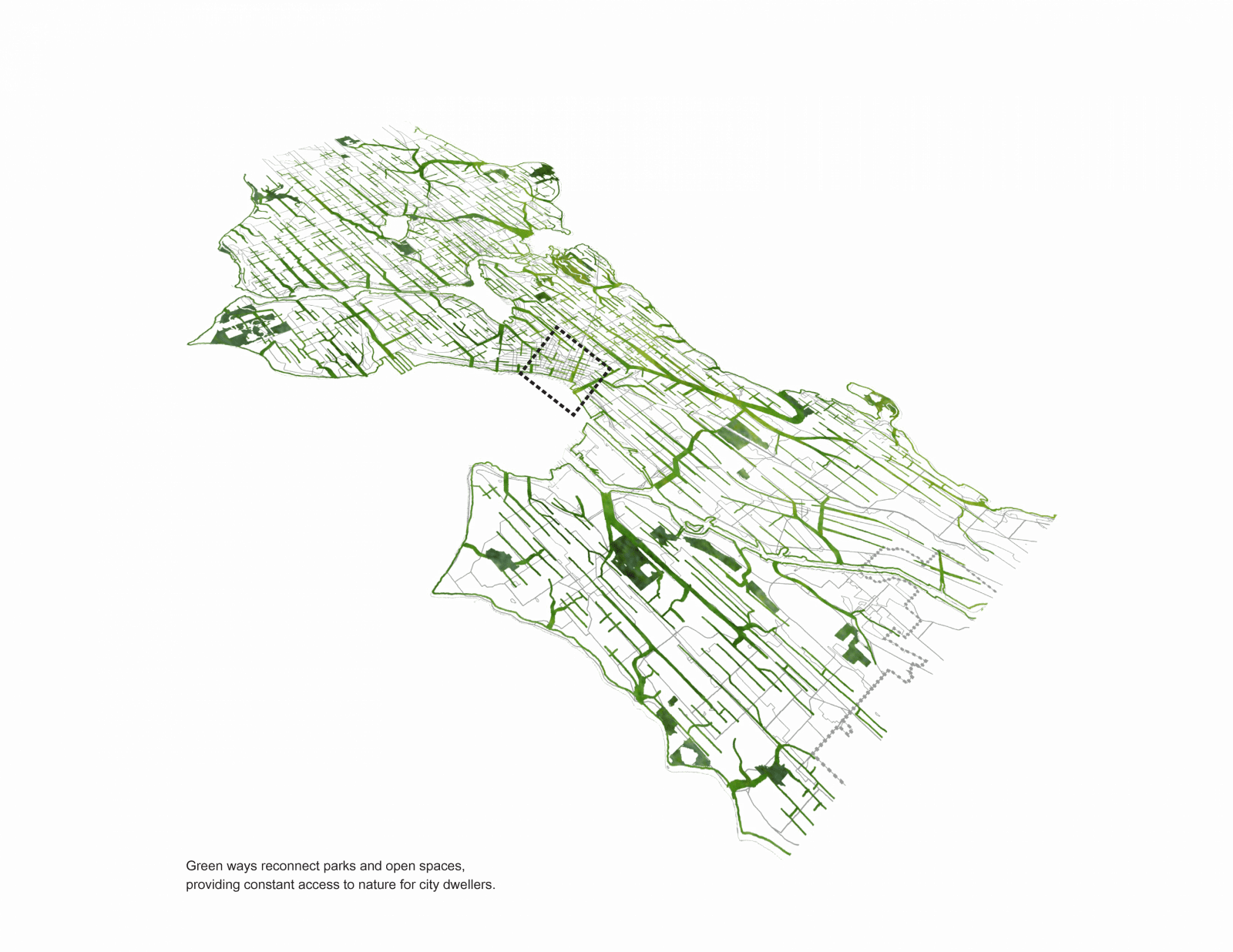Miller Hull
- Portfolio
- Approach
- News
- About
- Connect
Taking Back Seattle's Right of Ways
Recharge the Battery Competition
This proposal is based on the premise that the city’s current urban condition contains latent opportunities created by past actions. Green ways reconnect parks and open spaces, providing constant access to nature for city dwellers.


Taking back Seattle's Right Of Ways

The circulation of people, resources, water and air have long been the primary forces shaping our cities. During the last century, the public way was dominated by the automobile and as a result, conduits were carved through the urban fabric with a singular focus on personal transit. This proposal seeks to leverage city streets with a shifted focus towards biodiversity and the movement of natural systems through the heart of the city. Dense Douglas fir native greenbelts recharge the soils of the Battery Street and University Street Ravines, filtering stormwater collected from adjacent neighborhoods and delivering it to Elliot Bay. Salmon runs and pollinator pathways carve through the city in the tracks of automobiles- the sounds of the forest reflect down alleys. The ravines offer respite from the city while providing necessary infrastructure. Complementing the ravines, green streets with abundant landscaping and public space form a secondary system of greening Seattle’s right-of-ways.By reconfiguring the elements of the former Battery Street Tunnel, a new typology of layered circulation is created. Concrete beams that once formed the lid of the cut stand vertically- intermingled with trees- suspending a new pedestrian circulation above the ravine. A trail network twenty feet below the city grid now connects Denny Park to the Seattle Waterfront, offering recreation and education opportunities in the same space.
The University Street Ravine morphs residual under-utilized public space – Freeway Park, Seattle Art Museum terraces (Hammering Man) and Harbor Steps – into terraced ponds, waterfalls and native forest greenspace. Seattle’s next great public space was here all along- it just needed to be reconfigured.
The greatest potential of the right of way lies in the fact that we all have ownership of this space and that we can redefine the priorities of the current city. Our public ways must function and perform in multiple ways!
New green ways extend to Bell Town and Central Business District.
Concrete beams that once formed the lid stand vertically, suspending a new pedestrian walkway above. Below, a trail connects Denny Park to waterfront. The former walls of the tunnel are carved out as multifunctional space.
The street formerly dedicated only to private vehicles now welcomes natural inhabitants – fish, birds, and lively people into the heart of city. People congregate at the water’s edge. Water regulates temperatures, masks traffic noise, and its riparian habitat filters air, providing a healthier environment.
××